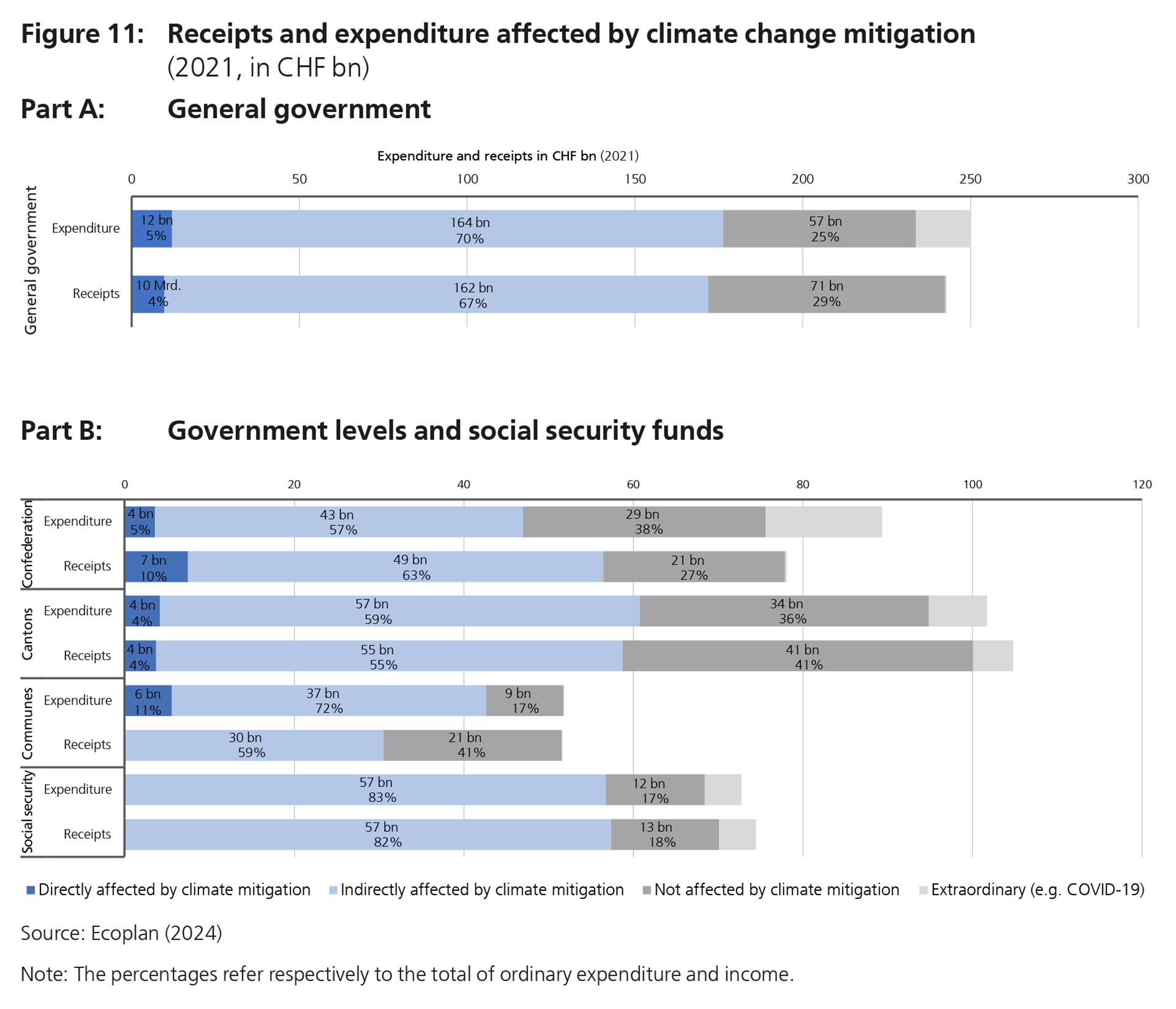Fiscal Sustainability Report for Switzerland
Trends such as ageing and climate change have a long-term impact on public finances. The Fiscal Sustainability Report highlights the need for action in economic and fiscal policy.
Brief summary
Ageing and climate change are long-term challenges for public finances. Therefore, an instrument that goes beyond the budget and financial plan is needed to ensure a sustainable fiscal policy. The main section of the fiscal sustainability report shows the implications of currently foreseeable ageing for Switzerland's public finances in the long term. Based on a pilot study, the impact of climate protection measures to achieve the net zero target is also assessed for the first time in a supplementary analysis.
The fifth edition of the fiscal sustainability report was published in April 2024. Based on various assumptions, it projects the long-term development of public finances at all levels of government up to 2060. Two key structural developments, ageing and climate change, are the main topics. Both policy areas will pose major challenges for public finances in the medium to long term.
The projections are based on wide-ranging assumptions and are inevitably associated with uncertainties. Among other things, it is assumed that the federal and cantonal fiscal rules will not be applied, as otherwise it would not be possible to show the financial impact of ageing and climate change.
Additional demographic-dependent burdens
Based on the assumptions made about demographics and the economy, the analysis shows how public finances will develop between 2021 and 2060 as a result of ageing. The population scenarios drawn up by the Federal Statistical Office and the calculations of the Federal Social Insurance Office form an important basis.
In the baseline scenario, demographic-dependent expenditure for the general government sector increases from 17.2% of GDP to 19.8% in 2060. The cost driver for the Confederation and social security funds is AHV expenditure triggered by ageing. With the retirement of the baby-boom generation up to the mid-2030s, the biggest increase is through to 2040. Demographic-dependent cantonal expenditure is determined by healthcare and education until 2040. After 2040, healthcare and long-term care will be the key expenditure drivers.
Without countermeasures, the debt ratio would increase from its current 27% to 48% of GDP over the projection horizon to 2060. The federal level, including social insurance, and the cantons are heavily affected.
Fiscal policy – action required
The fiscal gap shows the need for action in order to prevent the debt ratio from rising above the 2021 level in 2060. The fiscal gap for all government units, i.e. the Confederation, social security funds, cantons and communes, is 0.7% of GDP in the baseline scenario. This means that annual savings or additional receipts of 0.7% of GDP would be required to stabilise the debt ratio at the 2021 level. 1% of GDP corresponds to approximately CHF 8 billion in the baseline year. The fiscal gaps of the social security funds, the cantons and the communes are at roughly the same level, while the Confederation has a smaller fiscal gap. Yet the Confederation is also responsible for the social security funds, which means that, overall, there is a more pronounced need for financial and economic policy action at federal level.
Finally, the projections show that higher economic growth contributes to dampen the additional burdens caused by ageing and that real incomes would continue to increase even if the additional expenditure were fully financed from receipts.
First quantitative estimate of the impact of climate protection measures
Alongside ageing, climate change is one of Switzerland's biggest long-term challenges. The Federal Act on Climate Protection and Innovation commits Switzerland to becoming climate-neutral by 2050. The current edition of the fiscal sustainability report analyses the long-term effects of extending climate protection measures on public finances for the first time as part of a pilot study. The study breaks new methodological ground, as there is still no established international procedure for analysing the long-term effects of climate protection on public finances.
The assumed climate protection measures affect the receipts and expenditure of the Confederation, cantons, communes and the social security funds both directly and indirectly. Direct effects include, for example, declining receipts from mineral oil tax and the CO2 levy on thermal fuels, or public expenditure on the federal and cantonal buildings programme. As climate protection measures also dampen economic growth, they also have an indirect impact on the growth of public receipts and expenditure. Indirect effects relate to revenue, for example receipts from direct federal tax and VAT, or expenditure on social security, such as federal contributions to social security funds. In 2021, around 71% of the general government's ordinary receipts and 75% of its ordinary expenditure was directly or indirectly affected by climate protection. The federal government is particularly exposed, among other things due to its high receipts from mineral oil tax, performance-related heavy goods vehicle charge (LSVA) and the CO2 levy.

Publication
Index
2024 Long-Term Sustainability Outlook
The Federal Department of Finance provides the basis for sustainable financial planning. This is already the fourth edition of the long-term sustainability report.
Latest press releases
First extrapolation for 2025: financing deficit of CHF 200 million
The Federal Council was informed about the current extrapolation on August 13, 2025. According to this first extrapolation, the Confederation is anticipating a financing deficit of CHF 200 million for this year. A deficit of CHF 800 million had been budgeted. The improvement can be explained primarily by much higher tax receipts.
Federal Finance Administration FFA
Switzerland - 3003 Bern


